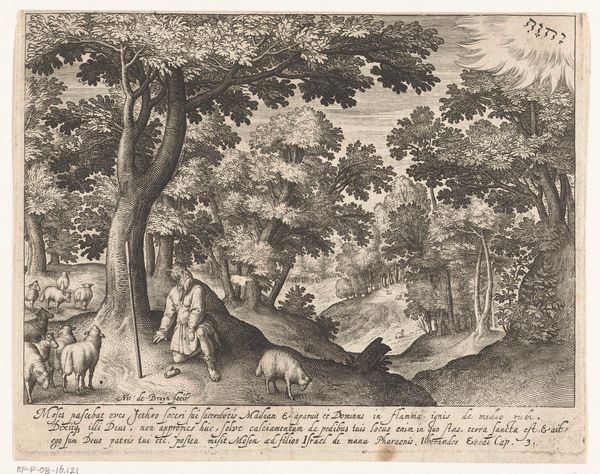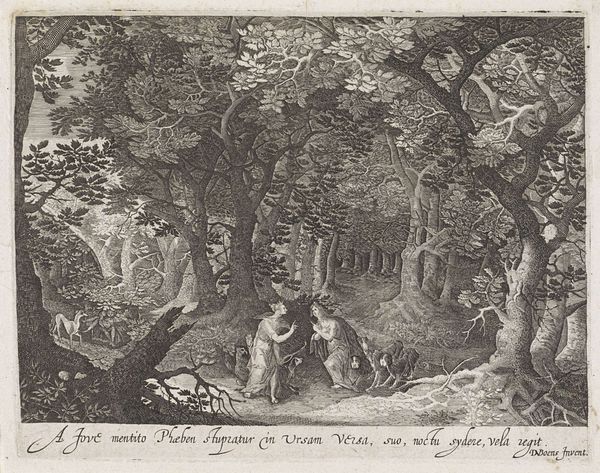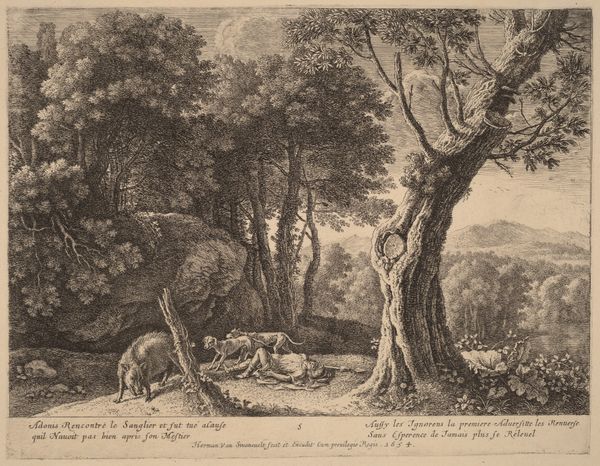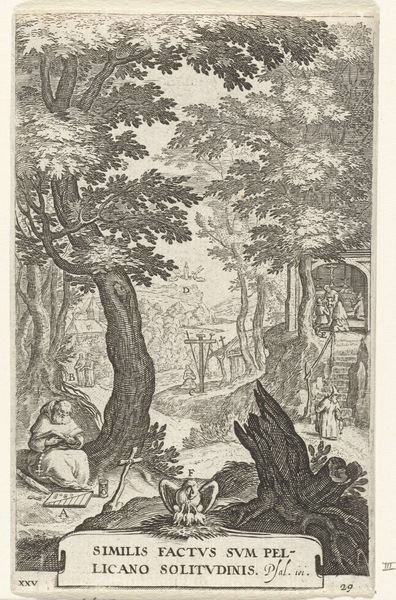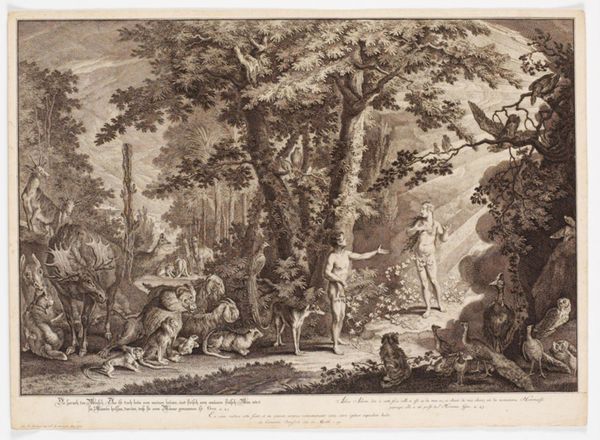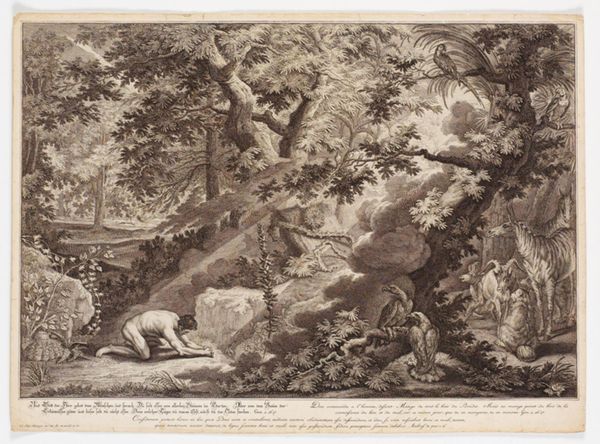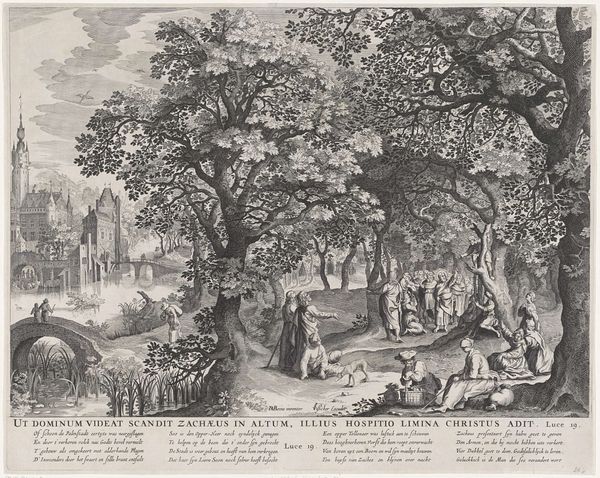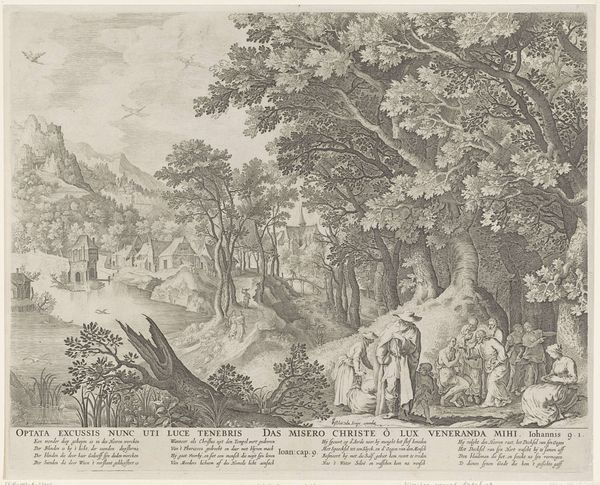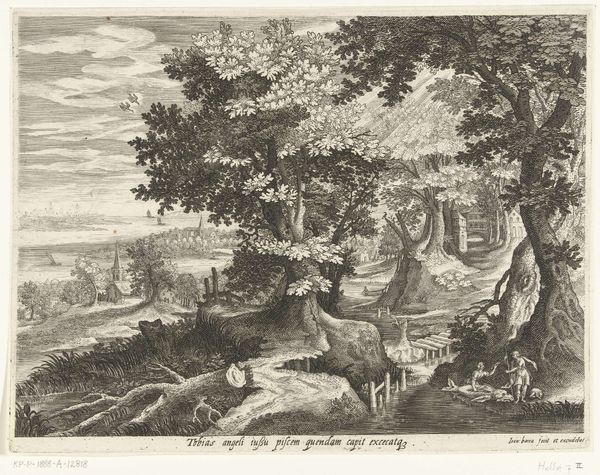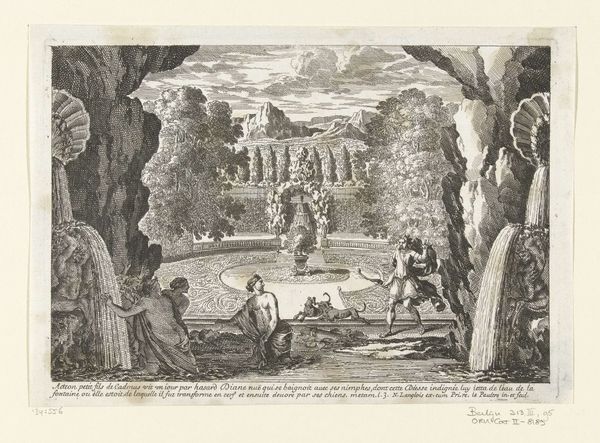
print, etching
#
narrative-art
#
baroque
# print
#
etching
#
landscape
#
figuration
Dimensions: height 162 mm, width 201 mm
Copyright: Rijks Museum: Open Domain
Curator: Immediately, this work feels steeped in drama. The dense, almost overwhelming foliage contrasts so sharply with the vulnerable figures depicted. There is an imbalance, or an exaggeration, here I find immediately arresting. Editor: We’re observing "Pyramus and Thisbe", a print attributed to an anonymous artist active sometime between 1591 and 1679, now held in the Rijksmuseum's collection. It is an etching. The piece captures a tragic scene from Ovid's Metamorphoses, set against a lush, Baroque landscape. Curator: The story comes to life primarily through the tonal contrast the etching technique affords the artist. The density of line in the towering trees on the left and the carefully delineated shrubbery elsewhere provide an enveloping darkness. Yet these heavy, dense areas are set against areas of extreme lightness. And within these opposing contrasts, one sees a great deal of variety—that’s particularly noticeable here. Editor: This composition certainly reflects the sensibilities of its time. The themes from Ovid, as well as the lush gardens here depicted, spoke to elite audiences of that time. Visual literacy within the noble class had become increasingly important, a currency of sorts, so to know and be able to recognize stories from antiquity in a fresh manner offered social opportunities. I also wonder, with such a premium being placed on these classical tales, what sort of meaning the populace would take away. Curator: Precisely. Semiotically speaking, that dense forest you spoke of creates an aura of inescapable doom. See how the bodies – that of Thisbe, especially, lying prostrate and diminutive. Visually, they're being consumed. Editor: Yet it seems at odds with some elements of everyday life from this time. For example, we see a very opulent water feature on the right-hand side. Given the issues surrounding sanitation at that point, placing a symbol of decadence such close to such tragedy strikes an odd tone. The role of gardens was in transition then, no longer strictly for pleasure. They also provided a great service as places of commerce. I wonder, then, if that influences this imagery as well. Curator: Well, if you apply this to that tension I find here, there is an element of visual dissonance which invites analysis. It does, in a peculiar way, echo the story itself—a world thrown out of balance due to circumstance and emotion. Editor: Indeed, it prompts contemplation about the different realities present, and perhaps purposely placed there by an anonymous, yet calculating hand.
Comments
No comments
Be the first to comment and join the conversation on the ultimate creative platform.

